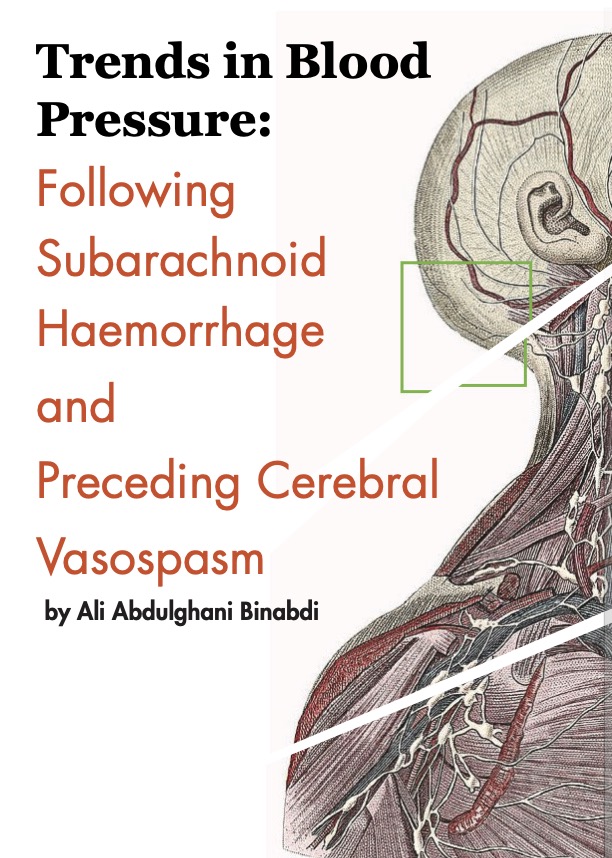Trends in blood pressure: following subarachnoid haemorrhage and preceding cerebral vasospasm
DOI:
https://doi.org/10.33178/SMJ.2021.1.5Keywords:
blood pressure, subarachnoid haemorrhage, cerebral vasospasmAbstract
Background
Trends in Blood Pressure (BP) following Subarachnoid Haemorrhage (SAH) have been reported in literature since 1982. Recent studies suggest a correlation to the incidence of Cerebral Vasospasm. This renders BP a candidate for possible early detection of Vasospasm. However, conflicting results regarding the nature and numerical of this correlation exist.
Objectives
To determine trends in BP following SAH in terms of Systolic (SBP), Diastolic (DBP) and Mean Arterial Pressure (MAP) and collaborate current literature evidence of their association to Cerebral Vasospasm.
Methods
Two databases (EBSCO Medline and PubMed) systematically reviewed using specified search criteria. Thirteen studies were portrayed, of which ten were accessible. Thorough critical appraisal of each paper was then manually performed using the CASP Cohort study checklist.
Results
A consistent pattern of change is seen through time in majority of studies with differences in the definite values of the BP variables. Collation of results showed a gradual rise in SBP followed by a plateau of 154.08 (±10.79) mmHg on days 4-8 post-SAH. Variations exist with regards to the association with Cerebral Vasospasm: a third of the studies depicted a significant steeper rise in SBP in Vasospasm patients, another third conversely reported sudden drops in SBP, and one study concluded that MAP has no significant relation to Vasospasm.
Conclusion
A biphasic trend is expected following SAH with an initial gradual rise followed by a sustained hypertensive plateau. Considerable conflict exists in the nature of association between BP and Vasospasm. Further analysis of such beneficial predictive potential is recommended for advancement in Vasospasm and Neuro-Cardiogenic care.
References
Disney L, Weir B, Grace M, Roberts P. Trends in blood pressure, osmolality and electrolytes after subarachnoid hemorrhage from aneurysms. The Canadian Journal Of Neurological Sciences Le Journal Canadien Des Sciences Neurologiques. 1989;16(3):299-304.
Faust K, Horn P, Schneider UC, Vajkoczy P. Blood pressure changes after aneurysmal subarachnoid hemorrhage and their relationship to cerebral vasospasm and clinical outcome. Clinical Neurology And Neurosurgery. 2014;125:36-40.
Fontana J, Scharf J, Weiss C, Schmieder K, Barth M. The spontaneous arterial blood pressure rise after aneurysmal subarachnoid hemorrhage - a biphasic phenomenon. Clinical Neurology And Neurosurgery. 2015;137:22-7.
Roederer A, Holmes JH, Smith MJ, Lee I, Park S. Prediction of significant vasospasm in aneurysmal subarachnoid hemorrhage using automated data. Neurocrit Care. 2014;21(3):444-50.
Tabuchi S, Hirano N, Tanabe M, Kurosaki M, Okamoto H, Kamitani H, et al. Relationship of hypotension and cerebral vasospasm in patients with aneurysmal subarachnoid hemorrhage. Neurol Res. 2006;28(2):196-9.
Yarlagadda S, Rajendran P, Miss JC, Banki NM, Kopelnik A, Wu AH, et al. Cardiovascular predictors of in-patient mortality after subarachnoid hemorrhage. Neurocrit Care. 2006;5(2):102-7
Kirkness CJ, Burr RL, Mitchell PH. Intra- cranial and blood pressure variability and long-term outcome after aneurysmal sub-arachnoid hemorrhage. American Journal Of Critical Care: An Official Publication, American Association Of Critical-Care Nurses. 2009;18(3):241-51.
Lindegaard KF, Nornes H, Bakke SJ, Sorte- berg W, Nakstad P. Cerebral vasospasm diagnosis by means of angiography and blood velocity measurements. Acta Neurochir (Wien). 1989;100(1- 2):12-24.
Kassell NF, Sasaki T, Colohan AR, Nazar G. Cerebral vasospasm following aneurysmal subarachnoid hemorrhage. Stroke. 1985;16(4):562-72.
Pluta RM, Hansen-Schwartz J, Dreier J, Vajkoczy P, Macdonald RL, Nishizawa S, et al. Cerebral vasospasm following subarachnoid hemorrhage: time for a new world of thought. Neurol Res. 2009;31(2):151-8.
Khurana VG, Besser M. Pathophysiological basis of cerebral vasospasm following aneurysmal subarachnoid haemorrhage. J Clin Neurosci. 1997;4(2):122-31.
Weir B, Grace M, Hansen J, Rothberg C. Time course of vasospasm in man. J Neurosurg. 1978;48(2):173-8.
Virag I, Matas M, Tonkovic D. Methods for detecting and monitoring cerebral vasospasm in aneurysmal subarachnoid hemorrhage. Signa vitae: journal for intensive care and emergency medicine. 2018;14(Supplement 1):39- 41.
Highton D, Smith M. Intensive care management of subarachnoid haemorrhage. Journal of the Intensive Care Society. 2013;14(1):28-35.
Vespa PM, Nuwer MR, Juhasz C, Alexander M, Nenov V, Martin N, et al. Early detection of vasospasm after acute subarachnoid hemorrhage using continuous EEG ICU monitoring. Electroencephalogr Clin Neurophysiol. 1997;103(6):607- 15.
Jung CS, Lange B, Zimmermann M, Seifert V. CSF and Serum Biomarkers Focusing on Cerebral Vasospasm and Ischemia after Subarachnoid Hemorrhage. Stroke Res Treat. 2013;2013:560305.
Grossauer S, Koeck K, Kraschl J, Olipitz O, Hausegger KA, Vince GH. Detection of Cerebral Vasospasm Following Aneurysmal Subarachnoid Hemorrhage Using Motor Evoked Potentials. Neurosurgery. 2016;78(2):265-73.
Placek MM, Wachel P, Czosnyka M, Soehle M, Smielewski P, Kasprowicz M. Complexity of cerebral blood flow velocity and arterial blood pressure in subarachnoid hemorrhage using time-frequency analysis. Conference Proceedings: Annual International Conference Of The IEEE Engineering In Medicine And Biology Society IEEE Engineering In Medicine And Biology Society Annual Conference. 2015;2015:7700-3.
Soehle M, Czosnyka M, Chatfield DA, Hoeft A, Pena A. Variability and fractal analysis of middle cerebral artery blood flow velocity and arterial blood pressure in subarachnoid hemorrhage. J Cereb Blood Flow Metab. 2008;28(1):64-73.
Programme CAS. CASP cohort study checklist. [Online]. 2018.
Teping F, Albanna W, Clusmann H, Schulze-Steinen H, Mueller M, Hoellig A, et al. Spontaneous Elevation of Blood Pressure After SAH: An Epiphenomenon of Disease Severity and Demand, But Not a Surrogate for Outcome? Neurocritical Care. 2018;29(2):214-24.
Pickard JD, Murray GD, Illingworth R, Shaw MD, Teasdale GM, Foy PM, et al. Effect of oral nimodipine on cerebral infarction and outcome after subarachnoid haemorrhage: British aneurysm nimodipine trial. Bmj. 1989;298(6674):636-42.

Downloads
Published
License
Copyright (c) 2024 Ali Abdulghani Binabdi

This work is licensed under a Creative Commons Attribution-NonCommercial 4.0 International License.









